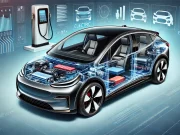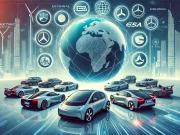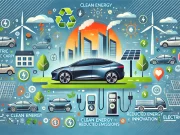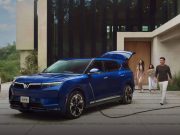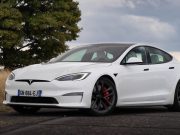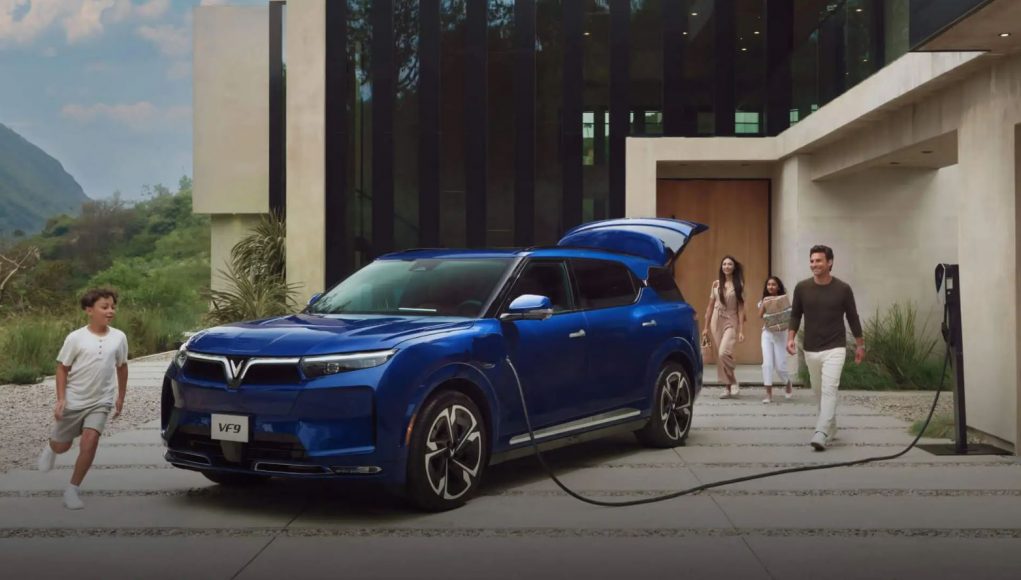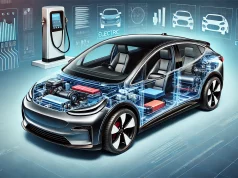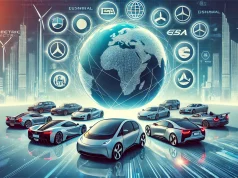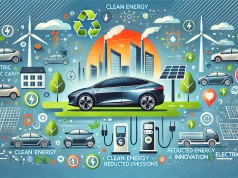Electric cars, often referred to as electric vehicles (EVs), are revolutionizing the automotive industry. As the world shifts towards sustainable energy solutions, understanding the concept of electric cars becomes increasingly important. This comprehensive guide delves into the definition of electric cars, how they work, their benefits and challenges, and highlights some of the most renowned electric car manufacturers globally, including VinFast, Huawei, and Xiaomi. We’ll also touch upon electric motorcycles, expanding our exploration of electric mobility.
What Is an Electric Car?
An electric car is a vehicle propelled by one or more electric motors, using energy stored in rechargeable batteries. Unlike traditional vehicles that rely on internal combustion engines (ICE) powered by gasoline or diesel, electric cars utilize electricity as their primary energy source.
Key Characteristics of Electric Cars
- Electric Propulsion: Powered entirely or partially by electricity.
- Rechargeable Batteries: Equipped with battery packs that store electrical energy.
- Zero Tailpipe Emissions: Produce no exhaust emissions during operation.
- Quiet Operation: Electric motors generate less noise compared to combustion engines.
- Instant Torque: Provide immediate power delivery for quick acceleration.
Types of Electric Vehicles (EVs)
Electric vehicles come in various forms, each utilizing electric power differently. Understanding these types helps consumers make informed choices based on their needs.
1. Battery Electric Vehicles (BEVs)
Definition: BEVs are fully electric vehicles that rely solely on electricity for power. They have no internal combustion engine and produce zero tailpipe emissions.
How They Work: BEVs are powered by electric motors and energy stored in battery packs, which are recharged by plugging into an external electricity source.
Examples:
- Tesla Model 3: Known for its impressive range and performance.
- Nissan Leaf: One of the first mass-produced electric cars, popular for its affordability.
- VinFast VF e34: Vietnam’s first electric SUV from VinFast, offering modern features and competitive range.
2. Plug-in Hybrid Electric Vehicles (PHEVs)
Definition: PHEVs combine an electric motor with an internal combustion engine. They can operate in all-electric mode for a certain distance before switching to hybrid mode.
How They Work: PHEVs have a battery pack that can be recharged by plugging into an external source. Once the electric range is depleted, the vehicle switches to using the combustion engine.
Examples:
- Toyota Prius Prime: Offers a balance between electric and hybrid driving.
- BMW 330e: Combines luxury and efficiency with its plug-in hybrid system.
3. Hybrid Electric Vehicles (HEVs)
Definition: HEVs use both an internal combustion engine and an electric motor but cannot be plugged in to recharge. The battery is charged through regenerative braking and the engine.
How They Work: The electric motor assists the engine to improve fuel efficiency. The vehicle switches between or combines both power sources as needed.
Examples:
- Toyota Camry Hybrid: Enhances fuel economy without changing driving habits.
- Honda Insight: Offers a sleek design with hybrid efficiency.
4. Fuel Cell Electric Vehicles (FCEVs)
Definition: FCEVs generate electricity using a fuel cell powered by hydrogen gas, emitting only water vapor and warm air.
How They Work: Hydrogen stored in the vehicle reacts with oxygen from the air in the fuel cell, producing electricity to power the electric motor.
Examples:
- Toyota Mirai: One of the first mass-produced FCEVs.
- Hyundai Nexo: Offers advanced technology and a long driving range.
How Electric Cars Work
Understanding the operation of electric cars involves exploring their core components and functionality.
Core Components
- Electric Motor: Converts electrical energy into mechanical energy to drive the wheels.
- Battery Pack: Stores electrical energy, typically using lithium-ion technology due to its high energy density and efficiency.
- Inverter: Converts direct current (DC) electricity from the battery into alternating current (AC) for the electric motor.
- Charging Port: Allows the vehicle to connect to an external power source for recharging.
- Onboard Charger: Manages the flow of electricity from the charging port to the battery during charging.
- Regenerative Braking System: Recovers kinetic energy during braking and deceleration, converting it back into electrical energy stored in the battery.
Operation
- Acceleration: Electric cars provide instant torque, delivering quick and smooth acceleration from a standstill.
- Driving: The electric motor receives power from the battery pack, propelling the vehicle.
- Braking: Regenerative braking captures energy that would otherwise be lost, enhancing efficiency.
- Charging: EVs can be charged using various levels of charging stations, from standard household outlets to specialized fast chargers.
Benefits of Electric Cars
Electric cars offer numerous advantages over traditional vehicles, impacting the environment, economy, and driving experience.
Environmental Impact
- Zero Tailpipe Emissions: Reduce air pollution by emitting no exhaust gases during operation.
- Lower Greenhouse Gas Emissions: When powered by renewable energy sources, EVs significantly cut carbon dioxide emissions.
- Reduced Dependence on Fossil Fuels: Decrease reliance on oil, contributing to energy security.
Cost Efficiency
- Lower Operating Costs: Electricity is generally cheaper than gasoline or diesel on a per-mile basis.
- Reduced Maintenance: Fewer moving parts lead to lower maintenance and repair costs. No oil changes, fewer fluids, and less wear on brakes due to regenerative braking.
- Incentives and Tax Credits: Many governments offer financial incentives to encourage EV adoption.
Performance
- Instant Torque: Provides quick acceleration and a responsive driving experience.
- Quiet Operation: Electric motors operate quietly, enhancing comfort.
- Smooth Driving: The absence of gear shifts results in seamless acceleration and deceleration.
Energy Efficiency
- High Efficiency: Electric motors convert over 77% of electrical energy into movement, compared to about 12%-30% for internal combustion engines.
Challenges and Limitations
While electric cars have many benefits, they also face certain challenges that affect their adoption.
Charging Infrastructure
- Availability: Limited charging stations in some areas can make long-distance travel challenging.
- Charging Time: Charging an EV takes longer than refueling a conventional car, especially with standard chargers.
- Standardization: Different connectors and charging standards can cause compatibility issues.
Range Anxiety
- Limited Driving Range: EVs typically offer less range per charge compared to the distance a conventional car can travel on a full tank.
- Battery Degradation: Over time, batteries may hold less charge, reducing range.
High Initial Costs
- Purchase Price: Electric cars can be more expensive upfront due to battery costs, although prices are decreasing.
- Battery Replacement: Replacing batteries can be costly, though warranties often cover battery life for several years.
Battery Longevity and Recycling
- Lifespan: Batteries degrade over time, impacting performance and range.
- Environmental Concerns: Disposal and recycling of batteries pose environmental challenges.
- Resource Extraction: Mining for battery materials like lithium and cobalt has environmental and ethical implications.
Electric Cars Around the World
The global EV market is growing rapidly, with several manufacturers leading the way.
Renowned Electric Car Manufacturers
VinFast (Vietnam)
- Overview: VinFast is Vietnam’s first domestic car manufacturer, expanding into the global EV market with a focus on smart electric vehicles.
- Key Models:
- VinFast VF e34: A compact electric SUV designed for urban use, featuring modern technology and an attractive price point.
- VinFast VF 8 and VF 9: Mid-size and full-size electric SUVs targeting international markets, offering advanced features and competitive range.
- Global Expansion: VinFast is entering markets like the United States, Canada, and Europe, aiming to become a global EV player.
Tesla, Inc. (United States)
- Overview: Pioneered the modern electric car market with high-performance, luxury EVs.
- Key Models: Model S, Model 3, Model X, Model Y.
- Innovations: Advanced battery technology, Autopilot driver-assistance system, extensive Supercharger network.
Nissan Motor Corporation (Japan)
- Overview: One of the first to produce mass-market electric cars.
- Key Models: Nissan Leaf, a popular and affordable BEV.
BYD Auto (China)
- Overview: A leading EV manufacturer in China, focusing on both passenger vehicles and commercial electric buses.
- Key Models: BYD Han, BYD Tang.
Volkswagen Group (Germany)
- Overview: Investing heavily in electric mobility as part of its sustainability goals.
- Key Models: Volkswagen ID.3, ID.4; Audi e-tron.
Xiaomi Corporation (China)
- Overview: A major electronics company entering the electric vehicle market, leveraging its expertise in smart devices and technology.
- Initiatives:
- Electric Vehicle Division: Xiaomi has announced plans to invest heavily in EV development, aiming to launch its first electric car in the coming years.
- Smart Integration: Focuses on integrating smart home technology and IoT connectivity into vehicles.
Huawei Technologies Co., Ltd. (China)
- Overview: While not manufacturing cars directly, Huawei provides advanced technologies and solutions for electric vehicles.
- Contributions:
- Huawei DriveONE: An all-in-one electric drive system offering efficient powertrain solutions to automakers.
- Collaborations: Partners with automotive manufacturers to develop smart electric vehicles equipped with Huawei’s software and hardware solutions.
- Notable Partnerships: Worked with companies like Seres to launch vehicles like the Seres SF5, featuring Huawei’s technology.
Regional Trends
- Europe: Strong government incentives and stringent emission regulations drive EV adoption. Countries like Norway lead in EV market share.
- China: The largest EV market globally, supported by government policies and domestic manufacturers like BYD, NIO, and emerging tech companies like Xiaomi and Huawei.
- United States: Growing interest in EVs, with increasing infrastructure development and consumer awareness.
Future of Electric Cars
The future of electric cars is promising, with ongoing advancements and increasing adoption.
Technological Advancements
- Battery Technology: Development of solid-state batteries promises higher energy density, faster charging, and improved safety.
- Charging Infrastructure: Expansion of fast-charging networks reduces charging time and increases convenience.
- Autonomous Driving: Integration of advanced driver-assistance systems and AI technologies.
Market Growth
- Projected Sales: EVs are expected to account for a significant percentage of new car sales globally by 2030.
- Decreasing Costs: Economies of scale and technological improvements lower manufacturing costs.
- Consumer Acceptance: Growing environmental awareness and improved EV models enhance market acceptance.
Sustainability Efforts
- Renewable Energy Integration: Charging EVs with renewable energy sources maximizes environmental benefits.
- Battery Recycling: Developing efficient recycling methods to recover valuable materials and reduce environmental impact.
- Policy Support: Governments worldwide are implementing policies to promote EV adoption, such as bans on new ICE vehicle sales in future years.
Electric Motorcycles and Scooters
Expanding the realm of electric mobility, electric motorcycles and scooters offer efficient and eco-friendly alternatives for two-wheeler transportation.
Definition
Electric motorcycles and scooters are two-wheeled vehicles powered by electric motors and rechargeable batteries, providing a clean and quiet mode of transportation.
Benefits
- Urban Mobility: Ideal for navigating congested city streets and reducing traffic.
- Cost Savings: Lower operating costs compared to gasoline-powered counterparts.
- Environmental Impact: Zero tailpipe emissions contribute to improved air quality.
Notable Brands
VinFast (Vietnam)
- Overview: In addition to cars, VinFast produces electric scooters tailored for urban environments.
- Key Models:
- VinFast Klara: An electric scooter with modern design and connectivity features.
- VinFast Theon: A high-performance electric scooter with advanced technology.
Zero Motorcycles (United States)
- Overview: Leading manufacturer of high-performance electric motorcycles.
- Key Models: Zero SR/F, Zero FX.
Gogoro (Taiwan)
- Overview: Innovator in battery-swapping technology for electric scooters.
- Key Models: Gogoro Viva, Gogoro 2 Series.
NIU Technologies (China)
- Overview: Specializes in smart electric scooters with connectivity features.
- Key Models: NIU N-Series, M-Series.
Conclusion
Electric cars represent a significant shift in the automotive landscape, offering sustainable, efficient, and technologically advanced transportation solutions. Companies like VinFast are emerging as key players, expanding the global EV market. Tech giants such as Huawei and Xiaomi are leveraging their technological expertise to contribute to the EV industry, either through partnerships or developing their own vehicles.
While challenges like infrastructure and initial costs remain, ongoing developments and increasing global commitment to reducing emissions are propelling the growth of electric vehicles.
By embracing electric mobility, consumers can contribute to a cleaner environment, enjoy cost savings, and experience the innovative features that electric cars and motorcycles bring to the road.
FAQs
1. What is the definition of an electric car?
An electric car is a vehicle powered by one or more electric motors using energy stored in rechargeable batteries, without relying on an internal combustion engine for propulsion.
2. What are the main types of electric vehicles?
- Battery Electric Vehicles (BEVs): Fully electric, no combustion engine.
- Plug-in Hybrid Electric Vehicles (PHEVs): Combine an electric motor with a combustion engine and can be plugged in to recharge.
- Hybrid Electric Vehicles (HEVs): Use both an electric motor and combustion engine but cannot be plugged in.
- Fuel Cell Electric Vehicles (FCEVs): Generate electricity using hydrogen fuel cells.
3. What are the advantages of electric cars?
- Environmental Benefits: Zero tailpipe emissions, reduced greenhouse gases.
- Cost Savings: Lower fuel and maintenance costs.
- Performance: Instant torque and smooth acceleration.
- Government Incentives: Tax credits and rebates in many regions.
4. Which companies are notable in the electric car industry?
- VinFast: Vietnamese automaker expanding globally with electric SUVs and scooters.
- Tesla: American company leading in luxury and performance EVs.
- Nissan: Japanese manufacturer of the popular Nissan Leaf.
- BYD: Chinese company producing a range of electric vehicles.
- Huawei and Xiaomi: Chinese tech companies contributing to EV technology and development.
5. Are electric motorcycles and scooters a viable alternative?
Yes, they offer efficient, eco-friendly transportation, especially suited for urban environments. Advances in technology have made them more practical and accessible.
By understanding the concept of electric cars and their impact, we can make informed decisions about embracing this transformative technology. As electric vehicles continue to evolve, they hold the promise of a sustainable and exciting future in transportation.

